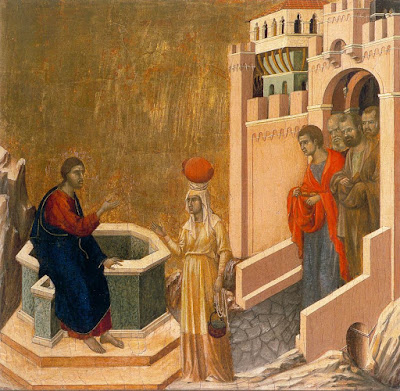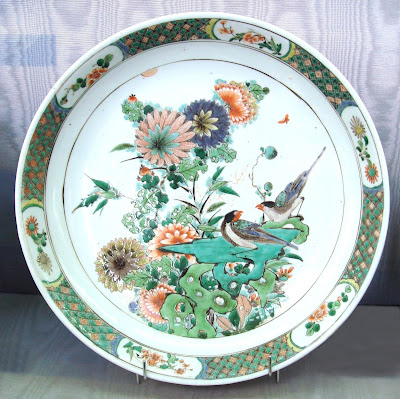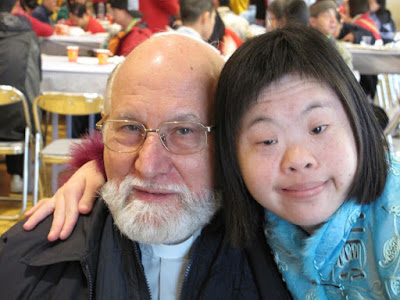‘Everyone who lives and believes in me will never die. Do you believe this?’ Sunday Reflections, Fifth Sunday of Lent, Year A

The Raising of Lazarus, Rembrandt [Web Gallery of Art]
Readings (New American Bible: Philippines, USA)
Readings (Jerusalem Bible: Australia, England & Wales, India [optional], Ireland, New Zealand, Pakistan, Scotland, South Africa)
For the shorter form of the Gospel omit the passages [in square brackets].
Gospel John 11:1-44 [11:3-7, 17, 20-27, 33b-45] (New Revised Standard Version, Catholic Edition, Canada)
[Now a certain man was ill, Lazarus of Bethany, the village of Mary and her sister Martha. Mary was the one who anointed the Lord with perfume and wiped his feet with her hair; her brother Lazarus was ill. So the sisters sent a message to Jesus, “Lord, he whom you love is ill.”] But when Jesus heard it, he said, “This illness does not lead to death; rather it is for God’s glory, so that the Son of God may be glorified through it.” Accordingly, though Jesus loved Martha and her sister and Lazarus, after having heard that Lazarus was ill, he stayed two days longer in the place where he was.
Then after this he said to the disciples, “Let us go to Judea again.” [The disciples said to him, “Rabbi, the Jews were just now trying to stone you, and are you going there again?” Jesus answered, “Are there not twelve hours of daylight? Those who walk during the day do not stumble, because they see the light of this world. But those who walk at night stumble, because the light is not in them.” After saying this, he told them, “Our friend Lazarus has fallen asleep, but I am going there to awaken him.” The disciples said to him, “Lord, if he has fallen asleep, he will be all right.” Jesus, however, had been speaking about his death, but they thought that he was referring merely to sleep. Then Jesus told them plainly, “Lazarus is dead. For your sake I am glad I was not there, so that you may believe. But let us go to him.” Thomas, who was called the Twin, said to his fellow disciples, “Let us also go, that we may die with him.”]
When Jesus arrived, he found that Lazarus had already been in the tomb four days. [Now Bethany was near Jerusalem, some two miles away, and many of the Jews had come to Martha and Mary to console them about their brother.] When Martha heard that Jesus was coming, she went and met him, while Mary stayed at home. Martha said to Jesus, “Lord, if you had been here, my brother would not have died. But even now I know that God will give you whatever you ask of him.” Jesus said to her, “Your brother will rise again.” Martha said to him, “I know that he will rise again in the resurrection on the last day.” Jesus said to her, “I am the resurrection and the life. Those who believe in me, even though they die, will live, and everyone who lives and believes in me will never die. Do you believe this?” She said to him, “Yes, Lord, I believe that you are the Messiah, the Son of God, the one coming into the world.”
[When she had said this, she went back and called her sister Mary, and told her privately, “The Teacher is here and is calling for you.” And when she heard it, she got up quickly and went to him. Now Jesus had not yet come to the village, but was still at the place where Martha had met him. The Jews who were with her in the house, consoling her, saw Mary get up quickly and go out. They followed her because they thought that she was going to the tomb to weep there. When Mary came where Jesus was and saw him, she knelt at his feet and said to him, “Lord, if you had been here, my brother would not have died.” When] Jesus [saw her weeping, and the Jews who came with her also weeping, he] was greatly disturbed in spirit and deeply moved. He said, “Where have you laid him?” They said to him, “Lord, come and see.” Jesus began to weep. So the Jews said, “See how he loved him!” But some of them said, “Could not he who opened the eyes of the blind man have kept this man from dying?”
Then Jesus, again greatly disturbed, came to the tomb. It was a cave, and a stone was lying against it. Jesus said, “Take away the stone.” Martha, the sister of the dead man, said to him, “Lord, already there is a stench because he has been dead four days.” Jesus said to her, “Did I not tell you that if you believed, you would see the glory of God?” So they took away the stone. And Jesus looked upward and said, “Father, I thank you for having heard me.I knew that you always hear me, but I have said this for the sake of the crowd standing here, so that they may believe that you sent me.” When he had said this, he cried with a loud voice, “Lazarus, come out!” The dead man came out, his hands and feet bound with strips of cloth, and his face wrapped in a cloth. Jesus said to them, “Unbind him, and let him go.”
Many of the Jews therefore, who had come with Mary and had seen what Jesus did, believed in him.
From The Gospel of John
I think it was back in the 1980s when I was at home in Ireland on a visit that I heard a young diocesan priest being interviewed on national radio about his work as a prison chaplain. He spoke about an occasion when he spent an hour in a cell with one prisoner who was there for stealing on a large scale. The priest got no response whatever – until he was about to leave. He then looked at the young man, put his arms around him and said, ‘I love you’, adding the man’s name.
The prisoner broke down and began to open up to the priest. Over a period of time they became friends. After he was released the young man set up a successful security agency, no doubt drawing on his ‘professional skills’.
In Worldwide Marriage Encounter we say ‘Love is a decision’. At times it may be accompanied by warm feelings, at other times the very opposite. It is easy for a young man and a young woman who find each other attractive to feel ‘love’. This may lead to ‘until death do us part’, a very solemn decision to love one another.
In his general audience on Wednesday, 2 April 2014, Pope Francis reminded married couples of this, gently, humorously and clearly. The secret is that love is stronger than an argument. And therefore I always advise married couples, ‘Don’t end your day without making peace.
Here the Pope was saying ‘Love is a decision’. He added humorously: It’s not necessary to call the United Nations and have them come to your house to broker the peace. A little gesture will do, a caress, a ‘Goodnight, see you tomorrow’. And tomorrow you start over. This is life, carry on! Go forward with the courage to want to live together. This is great, it’s beautiful. What Pope Francis is saying here is that love is a decision, a major decision made on one’s wedding day that demands many daily ‘minor’ decisions. The same applies to anyone called to a commitment.
The young priest visiting the prisoner in Ireland wasn’t experiencing any feelings of love for the prisoner and the latter probably felt deep anger towards him, maybe even hatred. But the priest made a decision to love that man, no matter how difficult it was, no matter what he was feeling at the time.

The Raising of Lazarus (after Rembrandt), Van Gogh
In the gospel we find Jesus making a number of decisions, all expressions of love:
- He decided not to go immediately to visit the gravely ill Lazarus when he got news of this: Though Jesus loved Martha and her sister and Lazarus, after having heard that Lazarus was ill, he stayed two days longer in the place where he was.
- He then decided to go back to Judea despite the fears of his disciples that harm would come to him.
- He accepted the reproaches of both Martha and Mary: Lord, if you had been here, my brother would not have died. He made no attempt to ‘explain’ why he hadn’t come.
- He told the people: Take away the stone.
The purpose of Jesus in all these decisions was to lead the disciples and Martha and Mary into a deeper faith:
- To the disciples and later to Martha: Lazarus is dead. For your sake I am glad I was not there, so that you may believe.
- To the Father: Father, I thank you for having heard me. I knew that you always hear me, but I have said this for the sake of the crowd standing here, so that they may believe that you sent me.
It is clear from the gospels that Jesus had a special, though not exclusive, affection for Martha, Mary and Lazarus. Maybe he felt free to drop into their home at any time and not be ‘on duty’. (As an aside, in more than 40 years in the Philippines I have rarely seen a bishop invited to any kind of occasion except to ‘do something’, to be ‘on duty’.) The friendship Jesus had with the three gave them the freedom to be open with him and to be true to themselves. Luke 10:38-42 shows us Martha scolding Mary in front of Jesus in a way that happens with someone considered part of the family. The Lord, if you had been here . . . of both Martha and Mary can be read as a reproach mingled with hope to someone deeply trusted.
Jesus invites each of us into that kind of warm, trusting relationship that is expressed in the story about St Teresa of Avila: Once, when she was travelling to one of her convents, St Teresa of Ávila was knocked off her donkey and fell into the mud, injuring her leg. ‘Lord’, she said, ‘you couldn’t have picked a worse time for this to happen. Why would you let this happen?’ And the response in prayer that she heard was, ‘That is how I treat my friends’. Teresa answered, ‘And that is why you have so few of them!’
But above all in the raising of Lazarus, which points towards the death and Resurrection of Jesus himself, we see the resurrection and the life who was greatly disturbed in spirit and deeply moved confronting death and conquering it. The death he was conquering wasn’t only physical death but the sickness and death brought about by sin. Jesus calls us to faith and hope in him and to make decisions to love based on that faith and hope.
It was such faith that gave that young priest in the prison cell the courage to express his love, rooted in the love of Jesus for both, for the prisoner in deed and then in word. And it was that expression of love, in deed and in word, rooted in the love of the resurrection and the life for both, that enabled the man to walk out of the prison cell he had created for himself in his own heart.
The decision of the priest to stay with the prisoner despite the lack of response and the eventual decision of the prisoner to believe in God’s love for him were both examples of love being a decision, decisions based on trust in God’s love for them, the kind of trust that Martha and Mary had in Jesus.



























